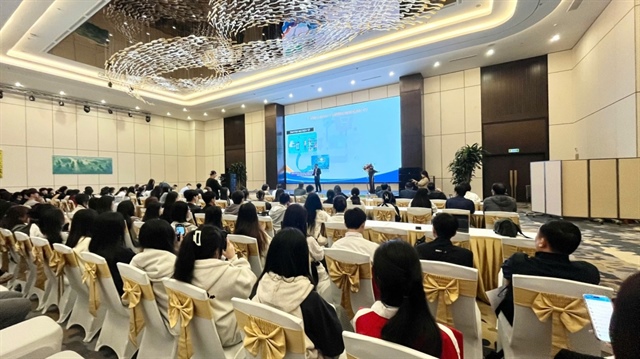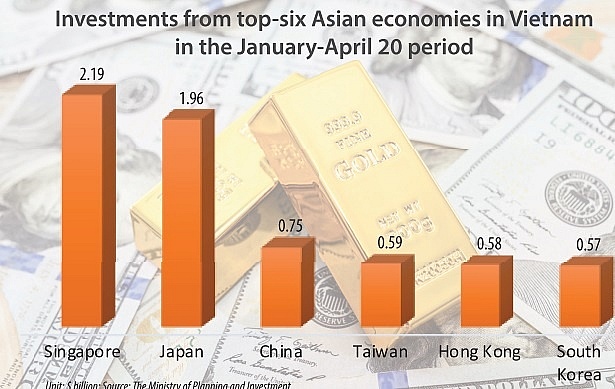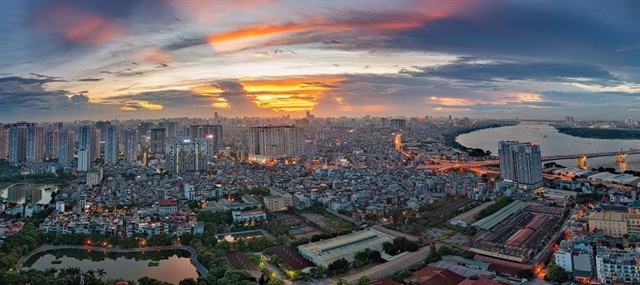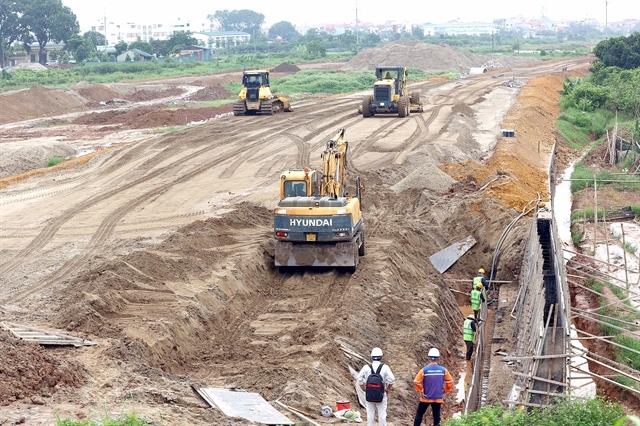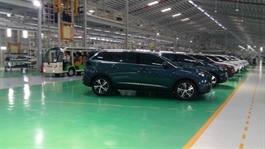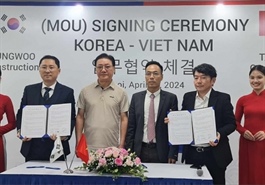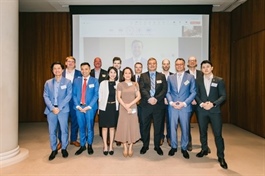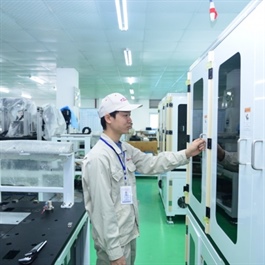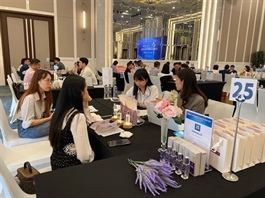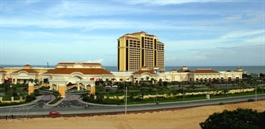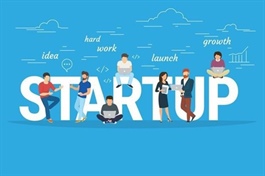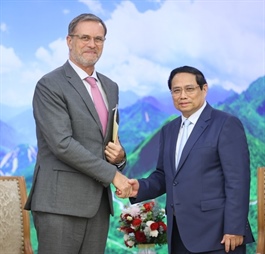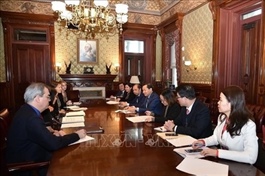Vietnam poised to reap rewards of rebound in global demand: AMRO
Vietnam poised to reap rewards of rebound in global demand: AMRO
Given its continued allure for FDI and burgeoning opportunities in renewable energy, the country is well-positioned to attract green investments that can drive sustainable growth.
Vietnam continues to shine as a manufacturing hub in the region, although it faced significant challenges last year amid a tough global economic landscape. Nevertheless, it is poised to reap the rewards of the rebound in global demand.

Overview of the event. Photo: Ngoc Mai/The Hanoi Times |
“Projections indicate that this year, the country's GDP is expected to expand by at least 6%, driven in large part by the resurgence in global economic activity, especially within the electronics sector,” said Chief Economist Hoe Ee Khor of the ASEAN+3 Macroeconomic Research Office (AMRO) during the launch of its annual flagship report the ASEAN+3 Regional Economic Outlook (AREO) 2024 today [April 8].
Another positive sign as Hoe mentioned, is the fact that Vietnam stands primed to attract substantial foreign direct investment (FDI), partly due to ongoing geopolitical tensions and the evolving dynamics of global trade and investment.
“It has emerged as a favored destination for the "China+1" strategy, alongside peers like Indonesia and Malaysia. Notably, Vietnam boasts a well-established manufacturing ecosystem that appeals to investors seeking stability and growth,” Hoe told The Hanoi Times.
Looking ahead, Hoe said Vietnam's extensive coastline exposes it to the growing threats of climate change and extreme weather events. Consequently, there is a pressing need for the country to invest in climate change adaptation measures, focusing on the development of weather-resilient infrastructure, he noted.
In parallel, Vietnam must also prioritize mitigation strategies. Given its continued allure for FDI and the burgeoning opportunities in renewable energy, the country is well positioned to attract green investments that can drive sustainable growth, Hoe said.
“The central challenge lies in striking a balance between the costs associated with climate change adaptation and the opportunities for long-term economic development. By effectively managing this balance, Vietnam can pave the way for resilient and sustainable growth in the years ahead,” he noted.
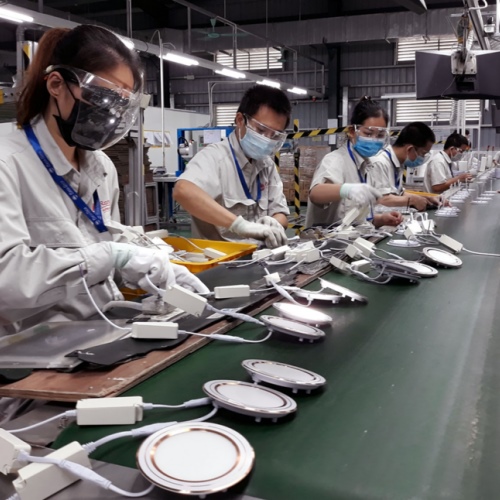
Electronics production at Rang Dong Light Source & Vacuum Flask Joint Stock Company. Photo: Hoai Nam/The Hanoi Times |
Long-term challenges remain significant for the region
For the ASEAN+3 region (including China, Japan, and South Korea), AMRO forecasts growth of 4.5% this year, up from 4.3% in 2023, and next year, 4.2%.
The stronger growth for ASEAN+3 this year will be mainly driven by robust domestic demand, underpinned by increasing household incomes and recovering investment activity. The anticipated turnaround in exports, in part due to the global chips upcycle, and the continued recovery of tourism will provide additional tailwinds.
The ASEAN region is expected to benefit from a combination of these favorable factors, with growth in 2024 and 2025 forecast at 4.8 and 4.9%, respectively.
With global commodity prices continuing to stabilize, inflation in ASEAN+3—excluding Laos and Myanmar—is expected to moderate from 2.8% last year to 2.5% in 2024, before easing further to 2.3% in 2025.
Nevertheless, AMRO cautions against taking the region’s positive momentum for granted, given the potential for disruptions to the growth trajectory.
“A sudden spike in global commodity prices, weaker-than-expected growth in China, or escalating geopolitical tensions could turn the tide for the region,” said Hoe. “Now that the current outlook is quite positive, given robust growth and gradual disinflation, ASEAN+3 economies need to rebuild policy space as much as they can.”
Almost a year after the World Health Organization declared the end of the Covid-19 pandemic, ASEAN+3 continues to grapple with pandemic scars. The global health crisis has taken a toll not only on economic activity but also on the labor force and capital formation, especially infrastructure. Trend growth for most regional economies has remained lower than the pre-pandemic levels, and the recovery in capital formation has been particularly weak.
“Revitalizing growth requires boosting investment and embracing technology to raise productivity and resilience, especially of smaller firms,” said Khor. “Stepping up regional collaboration can be instrumental in achieving this goal.”
AMRO also calls on the ASEAN+3 economies to work more closely together in response to three key secular trends: aging, global trade reconfiguration, and rapid technological change.
While these structural shifts pose various risks, they also create new sources of growth and productivity gains. Balancing the risks with the opportunities they offer will help ASEAN+3 secure sustainable, resilient, and inclusive growth over the long term.
“Aging presents a critical challenge for the ASEAN+3 region,” said Allen Ng, AMRO Group Head and one of the lead authors of the AREO report. "At the same time, it's important to recognize that the region is not just aging. We are also living longer and healthier lives. Adapting to this ‘longevity dividend’ and enabling our populations to age productively will be crucial for the region's future."
Similarly, while the ongoing trade reconfiguration is casting concerns about the region’s time-tested export strategies, it is also creating new opportunities. One example is the spike in FDI inflows to several ASEAN economies and the strong growth in ASEAN+3’s exports of “modern” services, especially those that can be delivered digitally.
However, there is growing about technology’s potential impact on the future of industries and jobs in ASEAN+3, especially with the rapid advances in artificial intelligence technologies such as Generative AI.
“Navigating these crosscurrents requires prioritizing robust policies to secure growth under various possible futures. For ASEAN+3, this includes deepening infrastructure development as well as promoting innovation and social inclusion,” Ng said.



